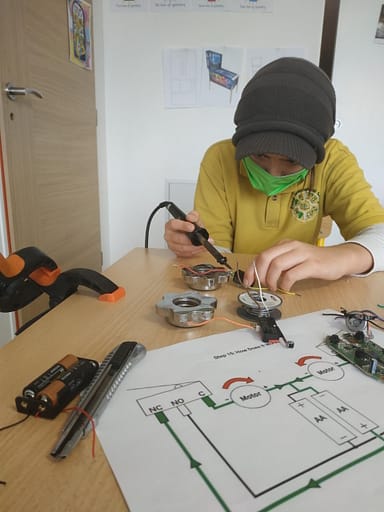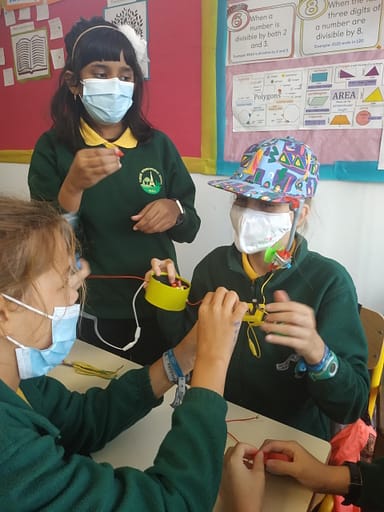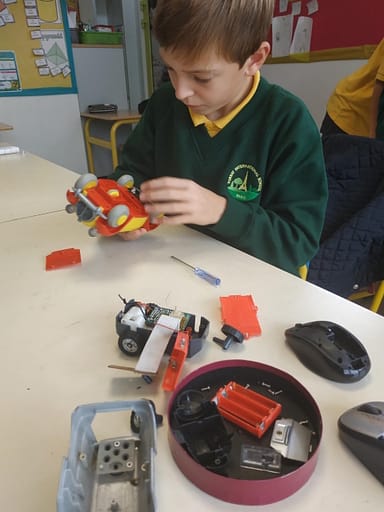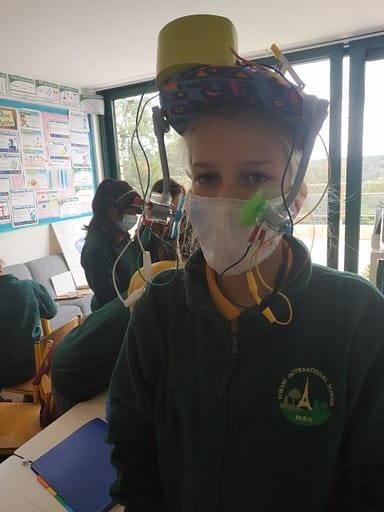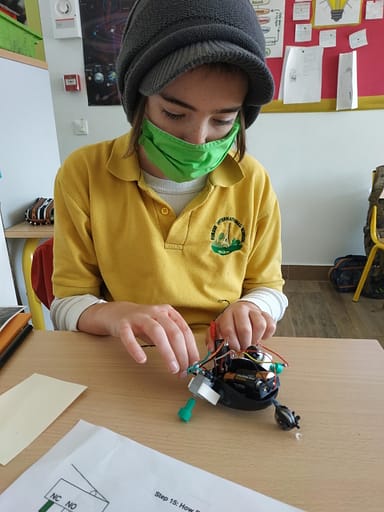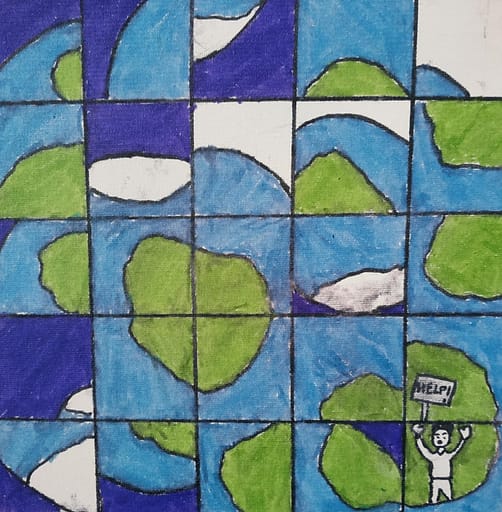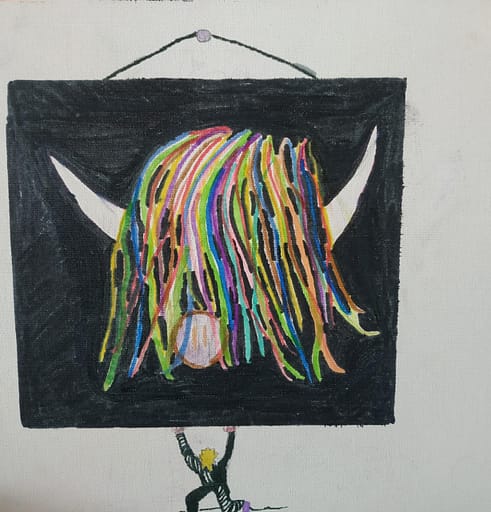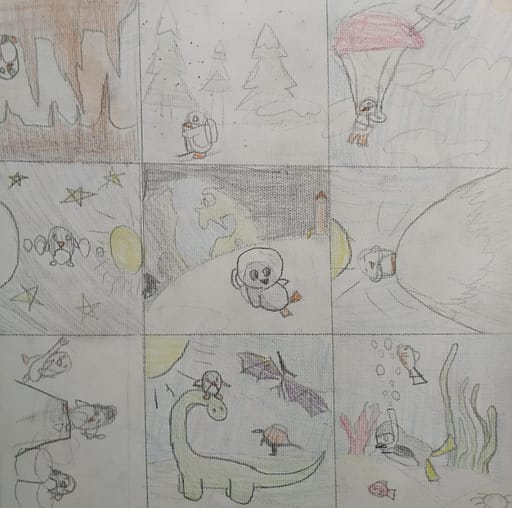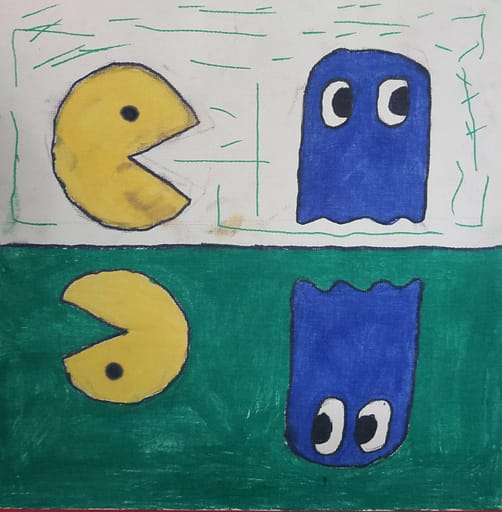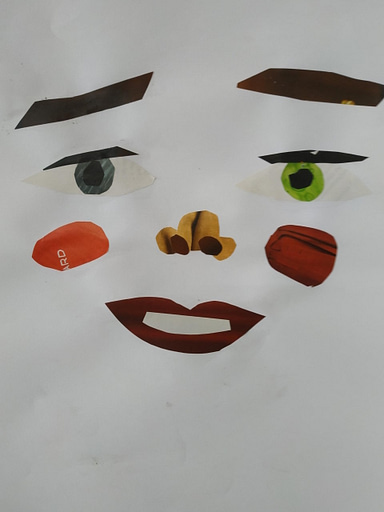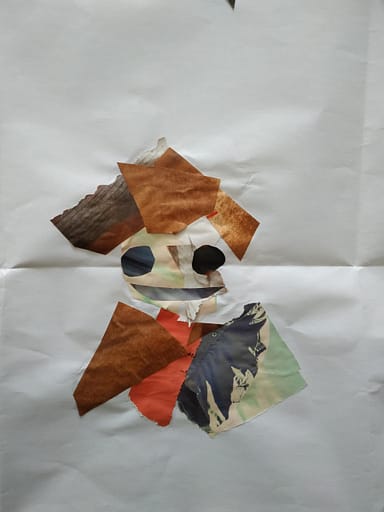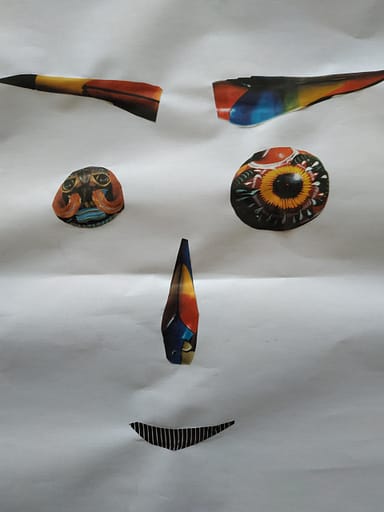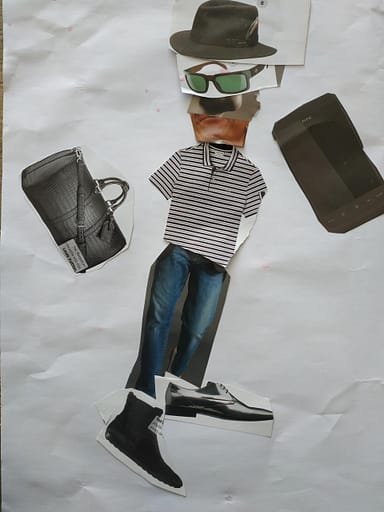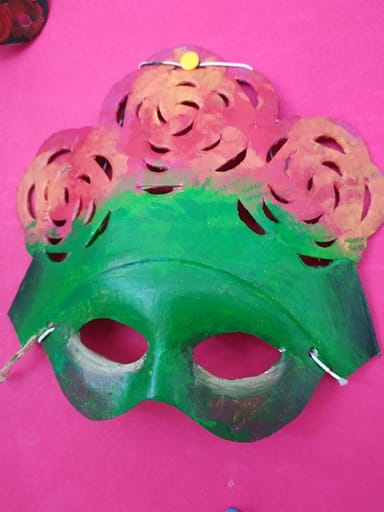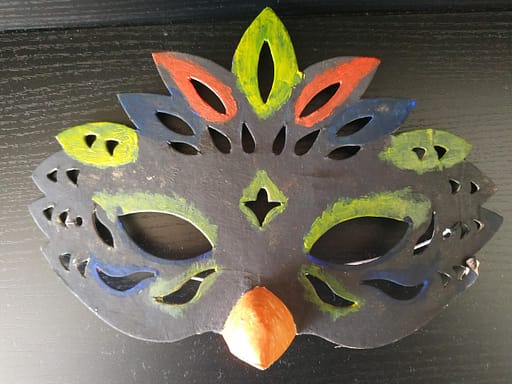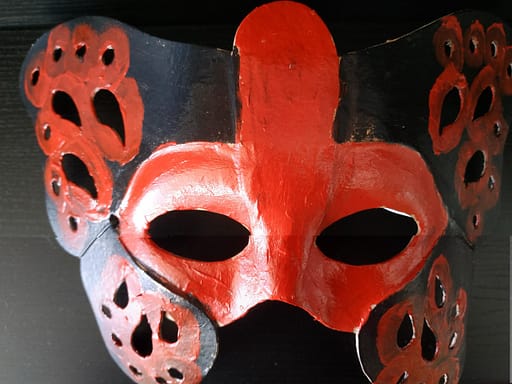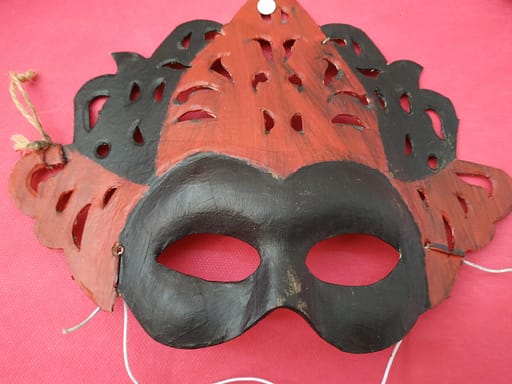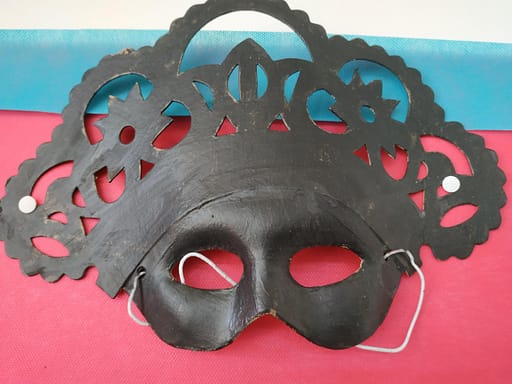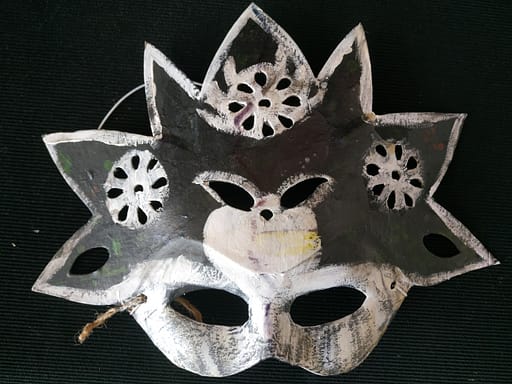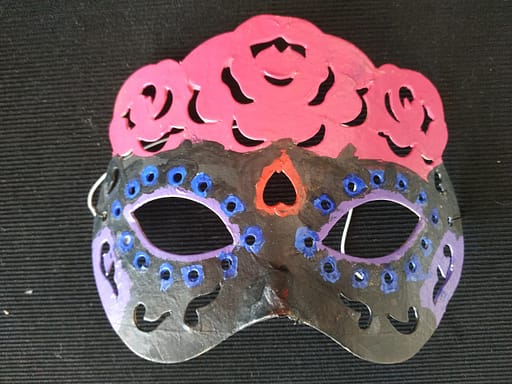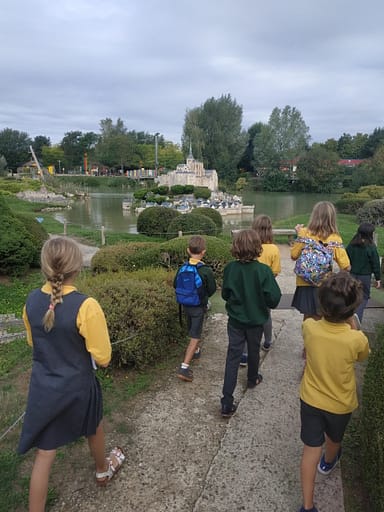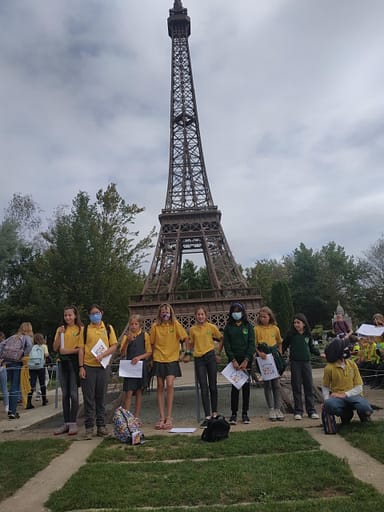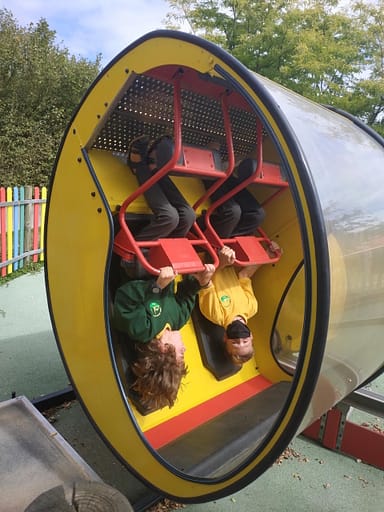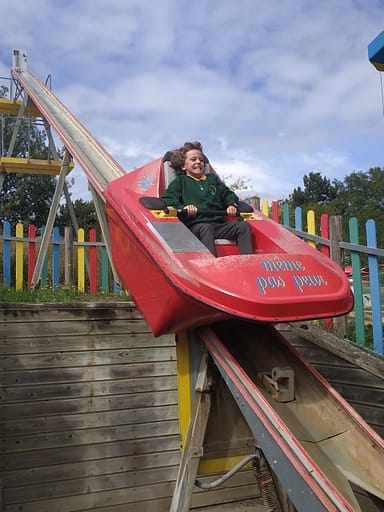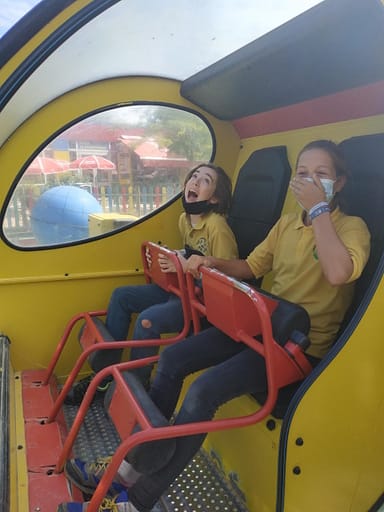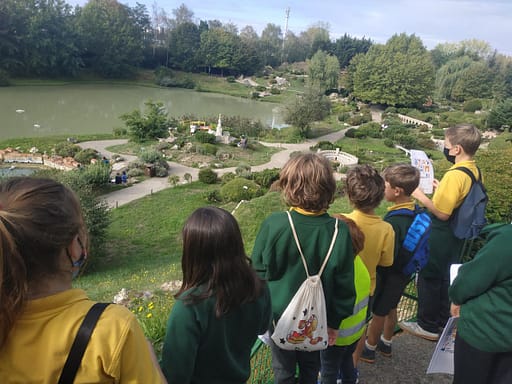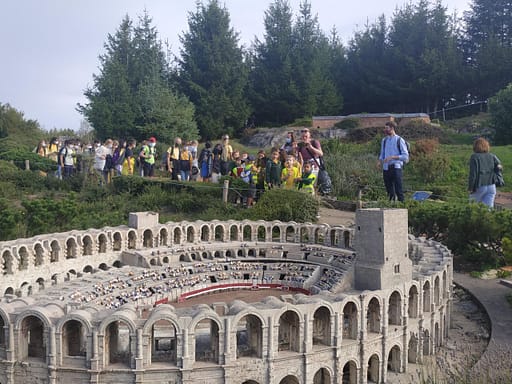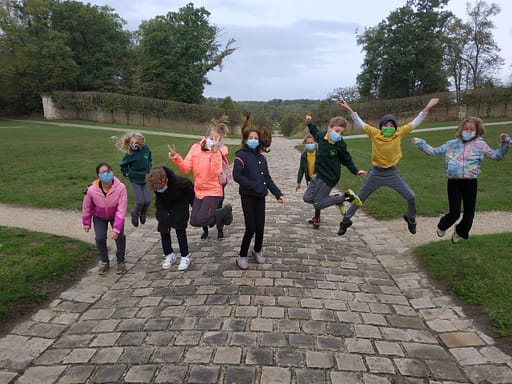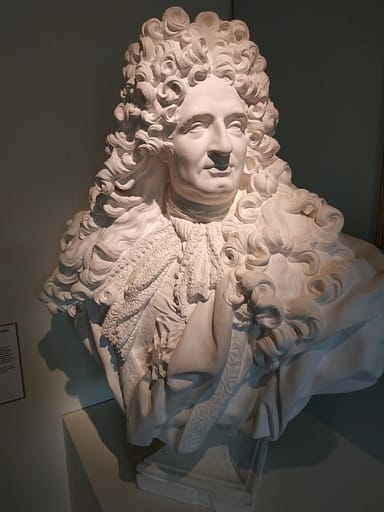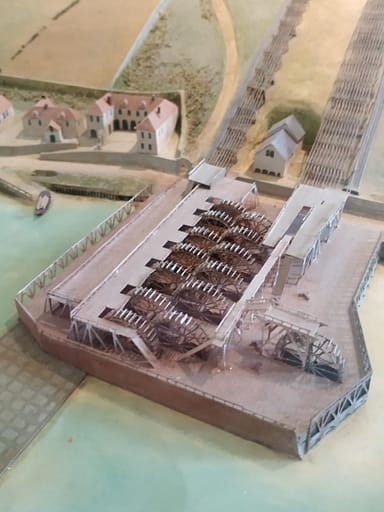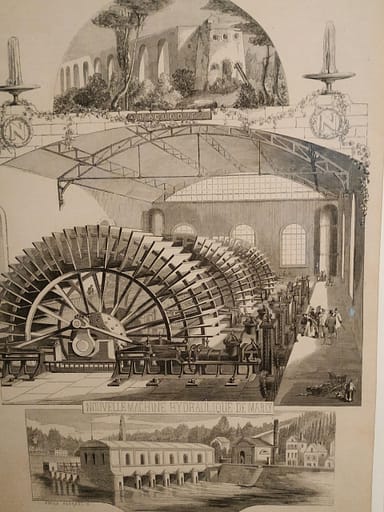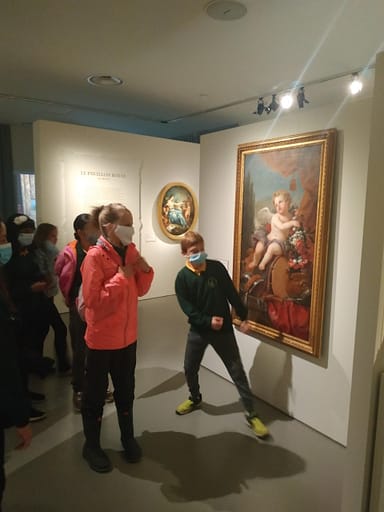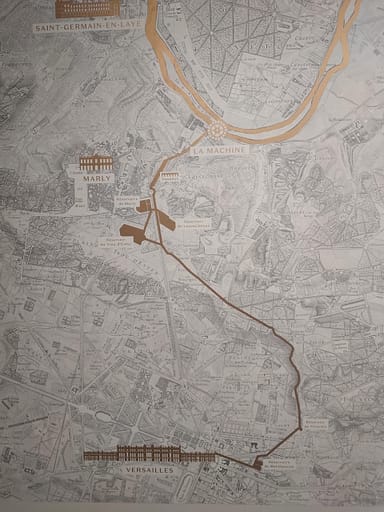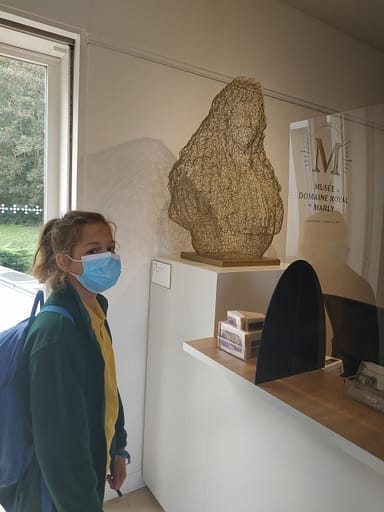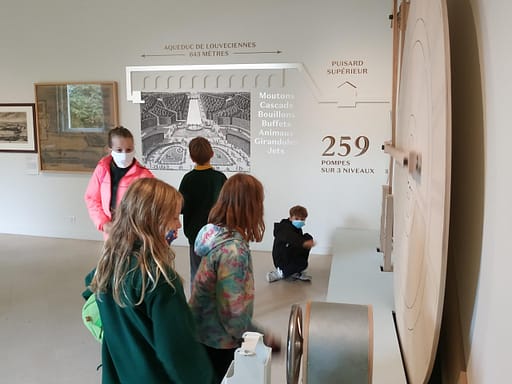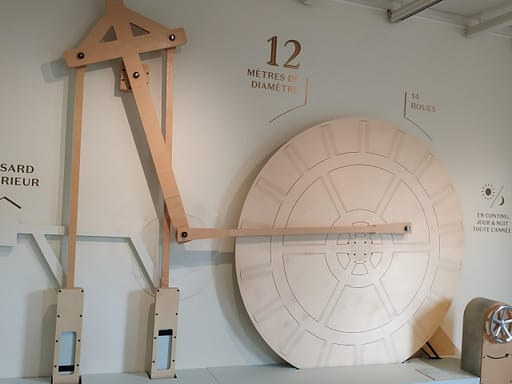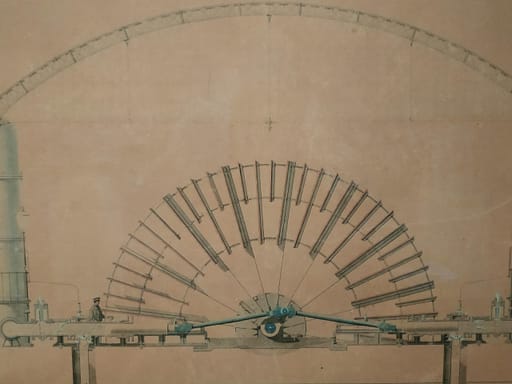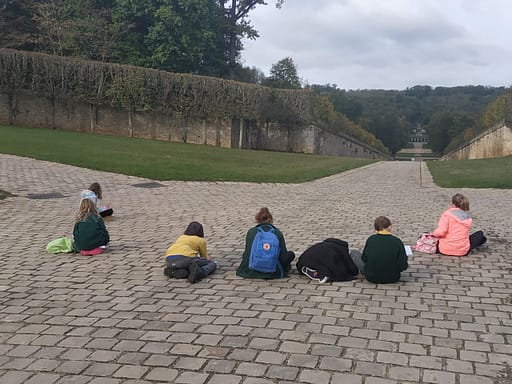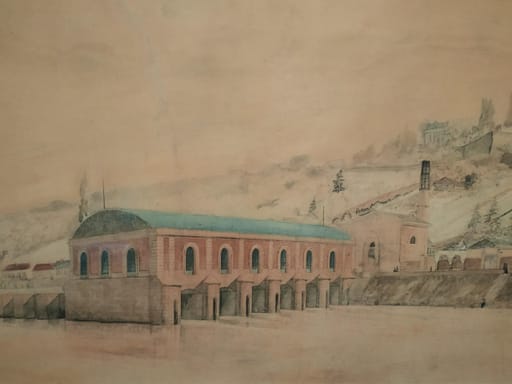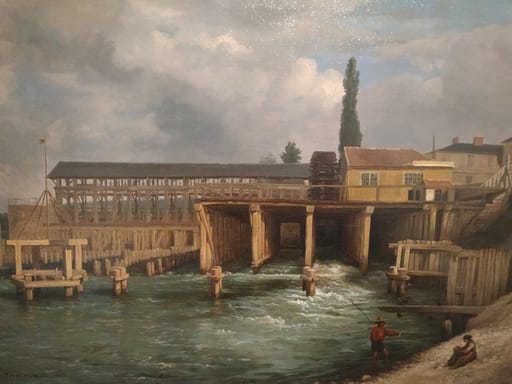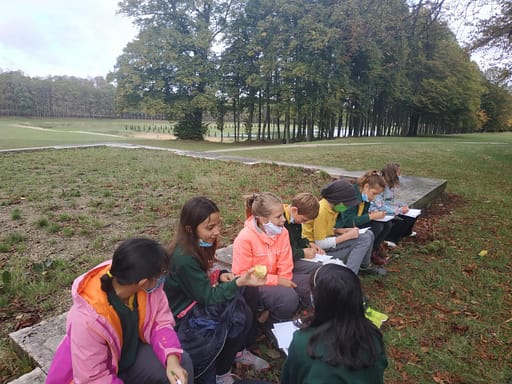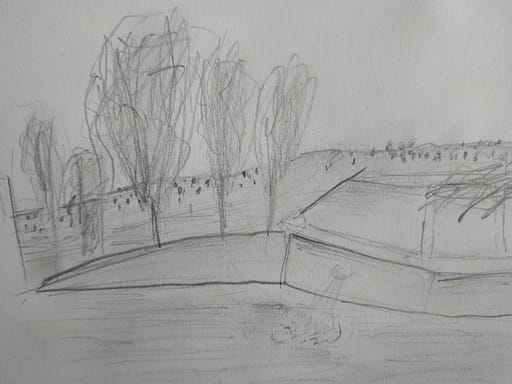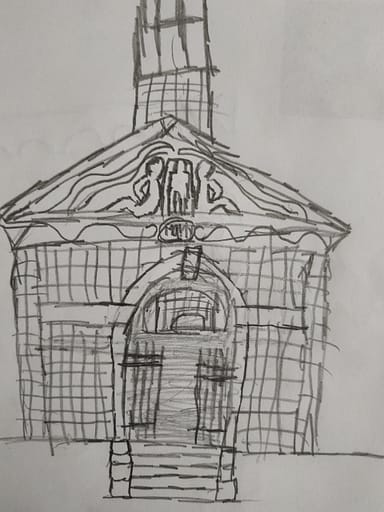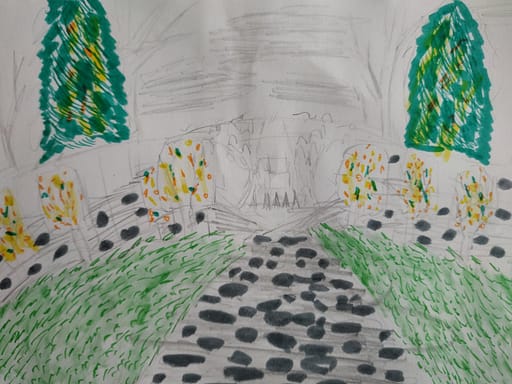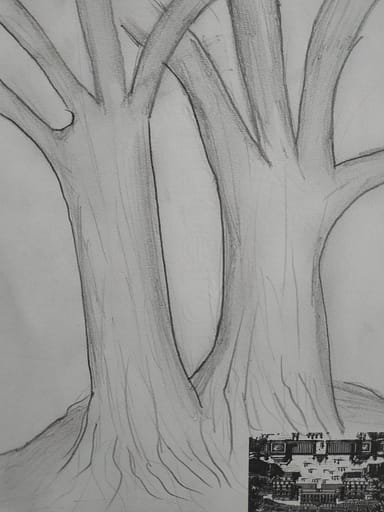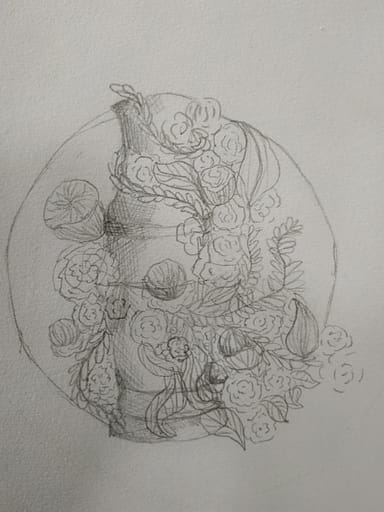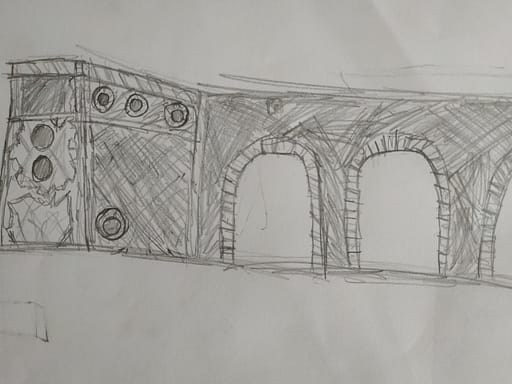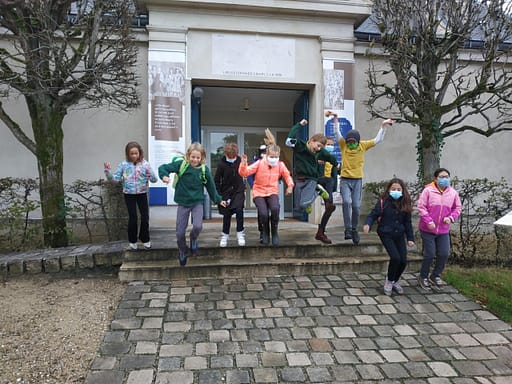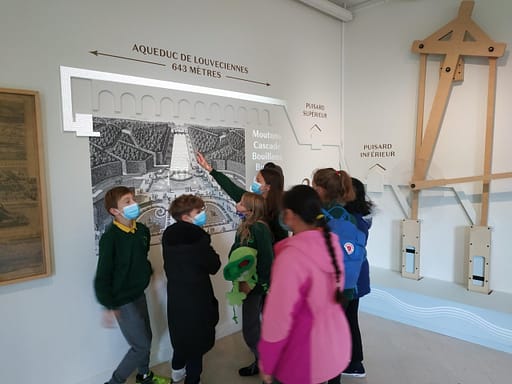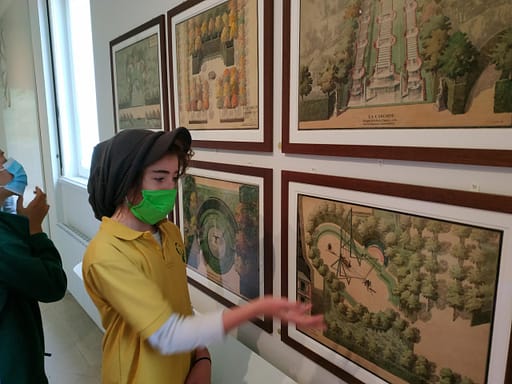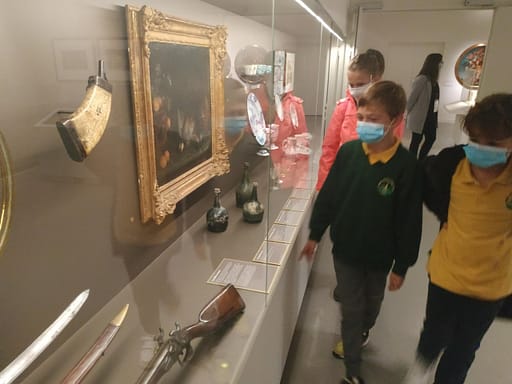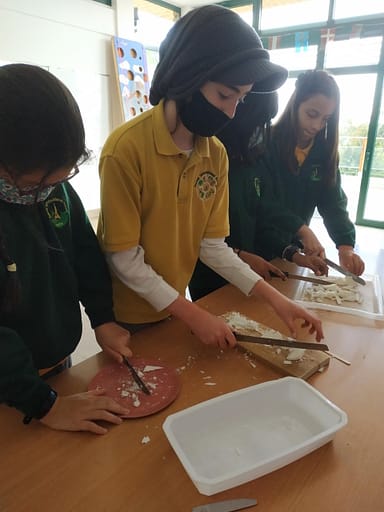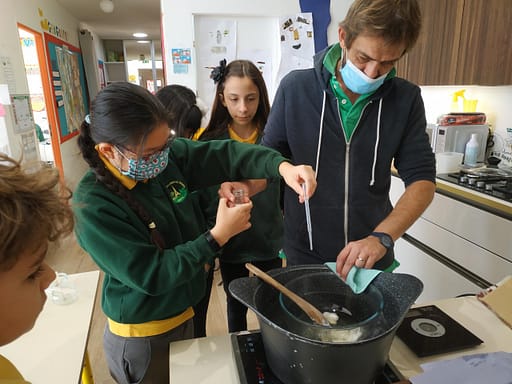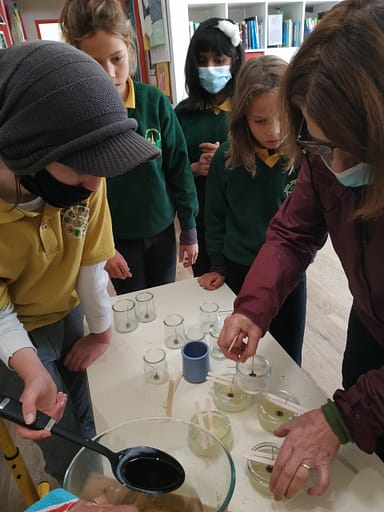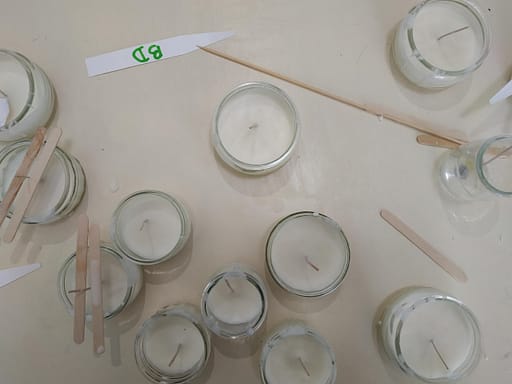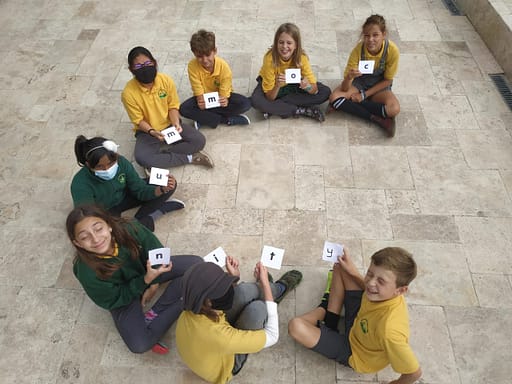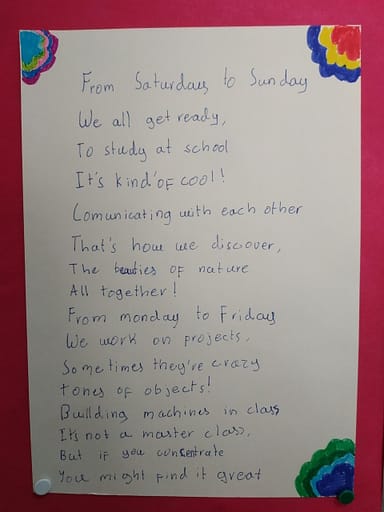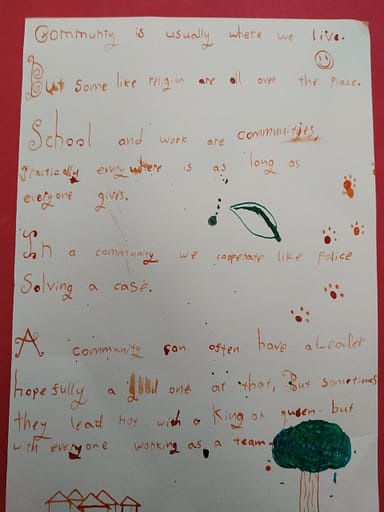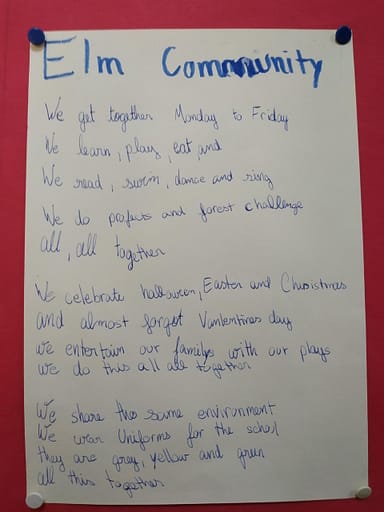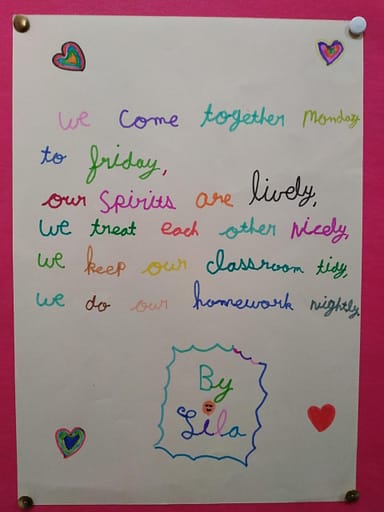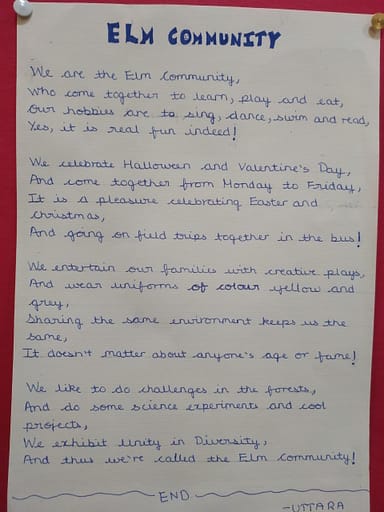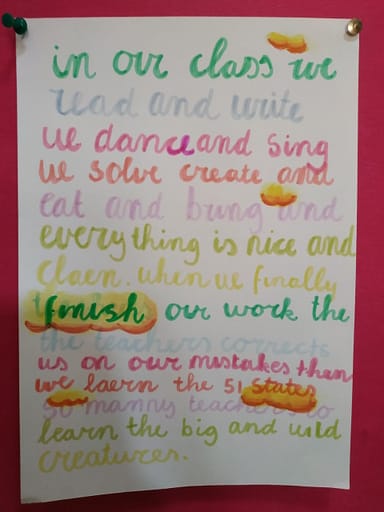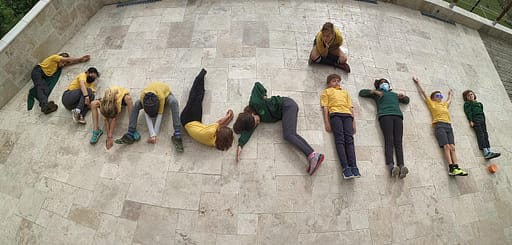“Community, Identity, Risk and Courage“
We are very different,
But we can all work as one.
Fantastic work, Oaks and Elms,
Work truly well done.
We can watch,
We can follow.
And good ideas,
We’ll borrow.
We can listen,
And we can dance.
We perform well together,
Together we prance.
Mathematics
During this unit, we worked on finding percentages of amounts and fractions of numbers. We revised rounding whole numbers and decimals and converted percentages, fractions and decimals. We practiced finding the equivalent fractions by multiplying/dividing the numerator and denominator by the same number and then converted mixed numbers and improper fractions. The children can confidently carry out four basic operations with fractions and know how to find the LCD (lowest common denominator) or when they need to simplify their fraction. We also worked on solving various problems with % increase and decrease.
Mixed number,
And improper fraction.
Are two best mates,
You can switch them around at 1 : 1 rates.
Banana bread,
and Pavlova cake.
You need to know fractions,
If you are ready to bake.
Adding and subtracting fractions,
With the same denominator.
Surely it ain’t difficult,
So don’t use calculator.
When adding fractions,
With denominator that ain’t the same.
Find your lowest common denominator,
Divide, multiply then add,
And you are on the fraction wall of fame.
Based on gained knowledge we constructed and interpreted various data tables, charts and diagrams, including frequency tables and pie charts. We solved different statistics problems involving percentages, amounts and degrees and then practiced constructing appropriate pie charts.
Different numbers,
and different shapes.
Compare those fractions,
And put them in their place.
Percentage increase,
What is that all about?
It’s not complicated,
Keep calm and don’t shout.
Just take your original price,
Calculate your percent.
Add them together,
and you will have your new price instead.
Just check that your number,
is bigger than you had before.
In real life you won’t be happy,
Because you’ll pay more.
And that’s your percentage,
Percentage increase.
Just check one more time,
Be cool, eat your cheese.
Science
We built on our prior knowledge and understanding of electrical circuits and explored the relationships between current, voltage and resistance, considering how these concepts are applied to everyday life. We constructed different electric circuits, practiced measuring and calculating resistance, voltage and current according to Ohm’s law. We learnt about “Lighting Africa” project and “The boy who harnessed the wind” story that clearly demonstrate that we need to put our ‘thinking caps’ on and help to solve some energy issues around the world. We compared different ways how electricity is provided to rural communities, discussed their sustainability and effectiveness. We then built our own inventions that maybe one day will change the world.
Remember those days,
When you were hot in your mask.
No one can deny,
What a demanding task.
But look what we have made,
We call it ‘invention’.
Will blow some fresh air,
And you will get some attention.
Electric circuits,
With those two spinning propellers.
Life is like a game of chess,
While you guys playing checkers.
Art
This term, we learnt about Andy Warhol, Banksy, JR and Dana Ellyn and then closely looked into their artwork that evidently raise different political, cultural, commercial and human rights issues. We discussed what we liked, disliked about their work and tried to explain what it reminded us of or what links we have made with the other artists. We looked further into their work to find a deeper meaning and then expressed our own artistic style with the clear message.
‘Educating our kids about freedom of expression through art helps them learn and talk about ongoing issues, and it gives them a voice in telling our governments that it is never too late to improve.’ Banksy says.
‘Banksy demonstrated how law enforcement is more occupied with keeping the walls clean from his art than dealing with the real issues that concern the safety and well-being of real people.’
The main lesson to take from Banksy’s artwork is to always take advantage of an opportunity, take risks, and explore your creativity.
Find out what the Earth is? Look around you. Save Earth.
Is it Worth It?
I got inspired by the amazing colours used by artist Steven Brown.
On a dark background the colours are so flashy!
Samantha
I was thinking about Andy Warhol’s Can of Soup. I thought, ‘Why not with an eraser?’ Then I found a new meaning – ‘Don’t judge people because they are simple or different.’
Everywhere and Nowhere
Where are we really?
What is Reality?
Usually the Ghost chases Pac Man.
What if Pac Man chased the Ghost
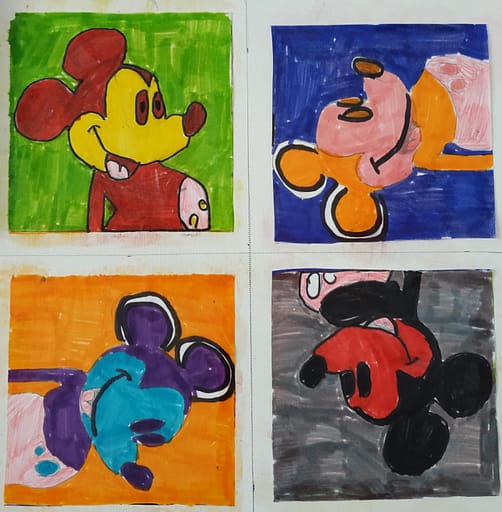
All around the World
Go to Disneyland for the best stuff.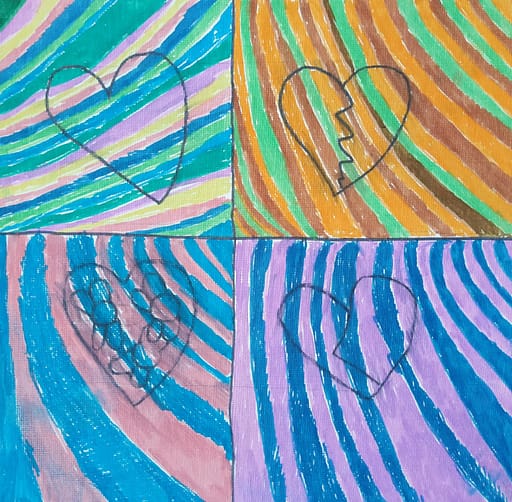
Your Life
Your heart has feelings. Your heart is happy and sad.
Art/Spanish Class with Mariana Gonzalez
Dans l’atelier d’espagnol par les arts du mois de septembre, les enfants ont fait la connaissance d’une artiste peintre mexicaine: Frida Kahlo.
Dans l’atelier créatif les enfants ont d’abord réalisé plusieurs exercices autour du portrait et de l’autoportrait et ils ont compris le contexte dans lequel Frida Kahlo a réalisé son oeuvre picturale. Ensuite, dans les cours de langue espagnole, les enfants ont appris le vocabulaire qui a entouré la vie de Frida.
France Miniature
FISP students on their monumental discovery of France! Have you ever visited 117 French monuments in one day? We did! They were right under our feet. We walked through some of the most beautiful villages, picturesque castles and enormous ports, spotted some zooming trains and even lived through the Fort Boyard experience. La vie est belle.
Musée Promenade/Machine de Marly
We visited the Musée Promenade, where we discovered many interesting facts about Machine de Marly and how King Louis XIV managed to have a large water supply for his fountains at Versailles without electricity. We explored different models of this engineering marvel, discussed the similarities and differences and how it had evolved with time.
Batteries, switches,
Light bulbs and motors.
Just give us some time,
and will invent some new rotors.
Producing electricity,
For our greener planet.
Enough of pollution,
We know you can’t stand it.
For Edison, and for Tesla,
And the boy who harnessed the wind.
Let’s do something together,
And let’s reduce our carbon footprint.
Machine de Marly ,
And those fancy fountains in Versaille,
It is good to be curious,
And ask questions like WHY.
Candle making workshop
IMYC Goals- rap
Literacy
We have been reading the novel ‘There’s a Boy in the Girls’ Bathroom’ by Louis Sachar.
We have enjoyed the story about the insecure bully Bradley Chalkers. While funny in parts, the story is poignant and encourages the reader to question why Bradley behaves the way he does.
Besides analysing Bradley’s behaviour we have looked at the other characters in the book, in particular new boy Jeff Fishkin who becomes Bradley’s only ‘friend’, and school counsellor Carla who sees through Bradley’s aggressive exterior to the lonely boy inside.
We have written diary entries from the point of view of these different characters.
Another theme this term has been ‘Community’. We have discussed what defines a community and have looked at different kinds; geographical, national and cultural, religious and ideological. We have thought about the kinds of communities we might belong to, and written poems about our Elm class community.
We have read ‘There’s A Boy in the Girls’ Bathroom’ together in class out loud. This helps with pronunciation, diction and expression.
Spelling tests have been held weekly, reviewing high-frequency words as well as those that we encounter in reading and the pupils’ own written work.
The class acted out short scenes from the book in which different characters meet Carla, the school counsellor. The scenes reveal the individual personalities as they open up to Carla.
In the forest, the children recreated scenarios depicting Bradley being bullied by his ‘friend’ Jeff and the group of girls from the story.

